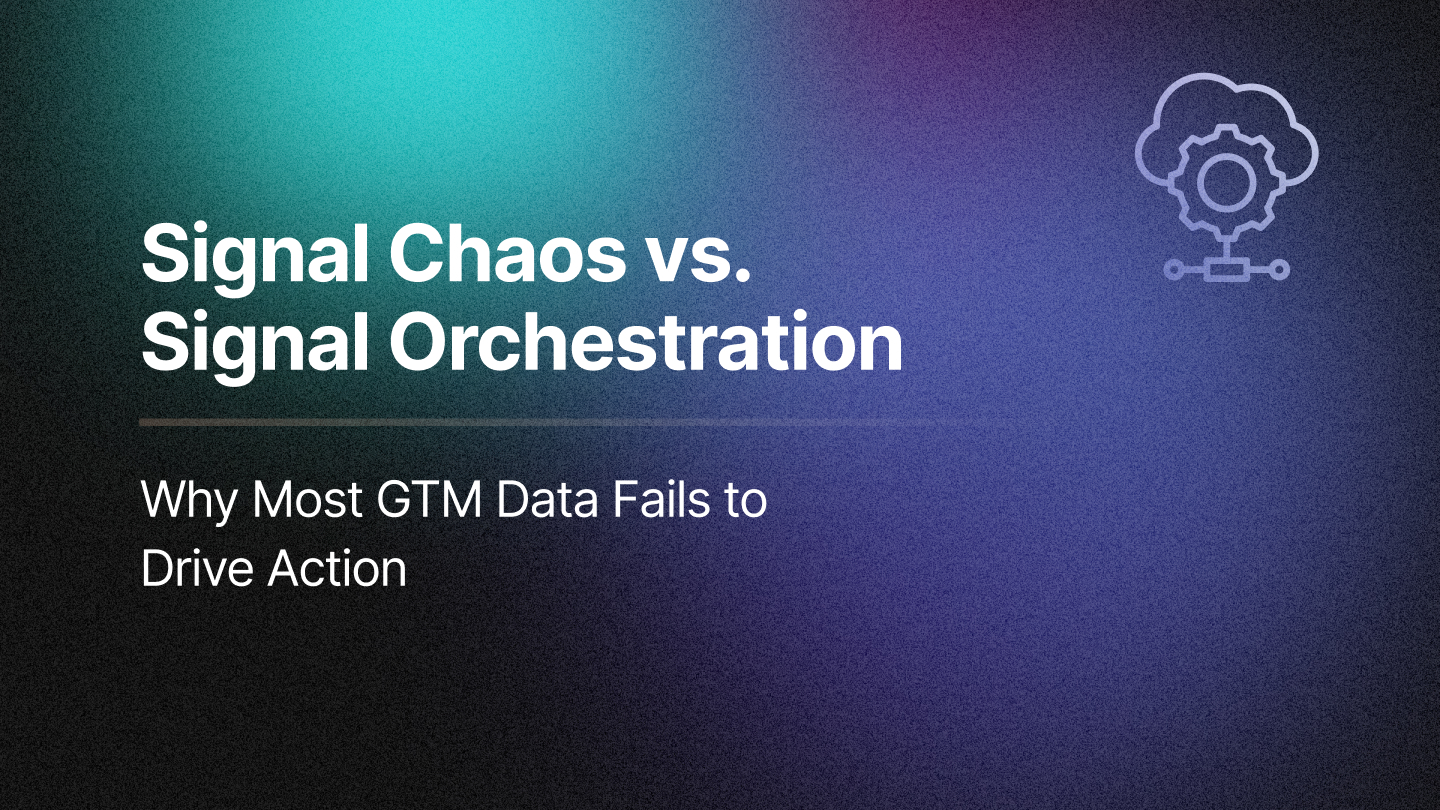Every modern GTM team has visibility into what’s coming, yet few can act on it fast enough. Predictive models forecast pipeline health, conversion likelihood, and revenue outcomes. Dashboards show what will happen weeks in advance. But the insight-to-action gap persists: by the time teams respond, the opportunity window has moved.
In parallel, autonomous AI systems are beginning to execute tasks independently, sending follow-ups, reallocating ad spend, or triggering plays. But without predictive context, these agents act in isolation, reacting to local data instead of enterprise goals.
The next evolution of GTM lies in connecting intelligence with autonomy. Predictive AI shows what’s likely to happen. Agentic AI ensures the system acts on it instantly, contextually, and intelligently. Together, they create a feedback-driven operating model where forecasts become triggers and actions feed new intelligence.
Predictive AI: Turning Data Into Foresight
Predictive AI is the intelligence layer that turns historical and real-time data into foresight. It doesn’t just analyze what happened; it anticipates what’s next. For GTM leaders, this means the ability to plan instead of reactively adjust proactively.
Predictive AI models in GTM typically include:
- Pipeline and revenue projections: Anticipating how much of the future booking target will be achieved based on current pipeline quality and conversion rates.
- Lead and account propensity scoring: Identifying where reps and marketers should focus their next best efforts.
- Funnel readiness and win-rate models: Quantifying conversion velocity and predicting where the pipeline may stall.
- Channel and campaign performance forecasts: Showing which demand sources are likely to drive incremental impact.
These models give GTM teams visibility into what’s coming and where intervention is needed.
With RevSure’s Predictive Intelligence Suite, revenue teams can simulate different pipeline scenarios, monitor coverage for upcoming quarters, and project bookings outcomes. Rather than waiting for quarter-end surprises, leaders can identify risk zones early and adjust plays mid-stream.
Predictive AI gives GTM systems their eyes, but not their hands. It illuminates what’s likely to happen but doesn’t yet act to change it.
Agentic AI: From Insights to Intelligent Action
Where predictive AI anticipates, agentic AI executes. Agentic systems operate as autonomous entities with defined objectives, full-funnel awareness, and the ability to make decisions based on changing signals.
These AI agents don’t just automate workflows; they reason, act, and adapt. They translate predictions into action without human bottlenecks, ensuring that every insight has an immediate operational response.
Imagine this:
- A predictive model flags that pipeline creation is 15% below target in EMEA.
- Within seconds, an Agentic AI system reallocates campaign budgets from low-ROI channels, triggers new plays for high-propensity accounts, and notifies SDRs through Reli Copilot to prioritize those accounts.
- As new data flows in, the system recalibrates, learning from the outcomes of its own actions.
This is not rule-based automation; it’s autonomous orchestration.
With RevSure’s Agent Hub, GTM teams can deploy specialized agents across marketing, SDR, sales, and RevOps. Each agent operates with guardrails and goals, interpreting predictive signals and executing next-best actions in real time.
If Predictive AI is the brain that forecasts outcomes, Agentic AI is the nervous system that moves the organization toward better ones.
Why Predictive Alone Isn’t Enough
Most organizations stop at prediction. They build advanced forecasting dashboards, propensity models, and conversion reports. But visibility doesn’t equal velocity.
Forecasts highlight where things are off track, but the corrections still depend on manual coordination. Marketing needs to develop a new campaign plan, Sales must reprioritize accounts, and RevOps must re-run projections. Each step adds friction and delay.
The opposite approach, deploying autonomous agents without predictive foresight, creates another failure mode. The system acts quickly but without context, optimizing for local outcomes that don’t advance strategic goals.
The power lies in synchronization. Predictive models anticipate pipeline gaps weeks ahead; agentic systems act on those insights instantly. The result is a closed feedback loop where every prediction becomes a decision, and every decision refines the next prediction.
Predictive AI provides clarity.
Agentic AI provides continuity.
Together, they make GTM systems both aware and adaptive.
Building a Dual-Layer GTM System
To operationalize this union, GTM leaders must design a system with three integrated layers:
- Predictive Intelligence Layer – Foresight models that continuously forecast outcomes such as pipeline health, conversion velocity, and booking readiness. In RevSure, modules like Pipeline Projections and Funnel Health Insights provide this intelligence, powered by unified data across marketing, sales, and customer success.
- Agentic Execution Layer – Autonomous AI agents that act on those predictions- shifting budgets, triggering plays, generating insights, or orchestrating workflows. Agent Builder empowers teams to configure and deploy these agents with embedded full-funnel context.
- Feedback Loop Infrastructure – A data foundation that connects predictions and actions. Every outcome updates the intelligence models, ensuring the system learns continuously.
This architecture redefines GTM operations: quarterly planning evolves into real-time orchestration. Instead of static reviews and delayed adjustments, teams operate in dynamic cycles where signals trigger decisions automatically and performance improves autonomously.
From Predictive to Agentic: A New Operating Model for GTM
Predictive and agentic AI aren’t rival technologies; they’re complementary stages of GTM maturity. Predictive AI builds the foundation for understanding what’s likely to happen. Agentic AI builds the capability to influence it as it happens.
Organizations that stop at prediction remain aware but not agile. Those that move toward agentic execution become adaptive systems, capable of sensing, deciding, and acting as one coordinated organism.
As RevSure’s Full-Funnel AI platform demonstrates, the future isn’t about choosing between prediction and action. It’s about building a unified GTM engine where predictive intelligence fuels agentic autonomy- a system that doesn’t just measure growth but continuously drives it.
Related Blogs







